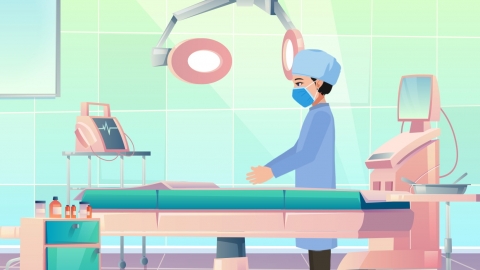How to Protect Brain Functional Areas During Craniotomy
During craniotomy surgery, the safety of brain functional areas can be ensured through preoperative neuroimaging evaluation, intraoperative neuronavigation systems, intraoperative electrophysiological monitoring, awake surgery techniques, and microsurgical techniques. If concerns exist, early consultation with a healthcare professional is recommended. Detailed explanations are as follows:

1. Preoperative Neuroimaging Evaluation: High-resolution MRI and functional MRI scans are used to precisely map brain functional areas and the location of lesions. These images assist surgeons in developing accurate surgical plans to avoid damaging critical brain regions.
2. Intraoperative Neuronavigation System: By integrating preoperative imaging data with real-time positioning technology, this system provides three-dimensional visual guidance to surgeons. Neuronavigation accurately locates the lesion and surrounding critical structures, reducing surgical errors and enhancing the safety and accuracy of the procedure.
3. Intraoperative Electrophysiological Monitoring: This includes motor evoked potentials, somatosensory evoked potentials, and electrocorticography. By monitoring changes in brain electrical activity, it allows real-time assessment of neural function. Any detected abnormalities prompt immediate intervention to prevent permanent damage.
4. Awake Surgery Technique: For surgeries involving language or motor functional areas, procedures can be performed while the patient is awake. Through patient interaction, real-time assessment of language and motor function is possible, ensuring preservation of critical areas while removing the lesion.
5. Microsurgical Technique: Using high-magnification microscopes and delicate surgical instruments, surgeons can operate under an enlarged visual field. Microsurgery improves precision, minimizes damage to surrounding normal tissues, and helps protect brain functional areas.
Prior to undergoing craniotomy, it is important to thoroughly understand the surgical plan and communicate extensively with the surgeon. Choosing an experienced medical team and advanced equipment can reduce surgical risks.
References
[1] Shi Weicheng, Chen Shaowei, Wang Zhiwei, et al. Risk factors and risk prediction model for CNS infection after craniotomy for spontaneous intracerebral hemorrhage [J]. Journal of Medical Theory and Practice, 2025, 38(03): 469-471.
[2] Gu Yimian, Cheng Xiaozhi. Application of three-dimensional CT reconstruction of the skull in craniotomy for acoustic neuroma [J]. Journal of Guangdong Medical University, 2024, 42(06): 608-611.






